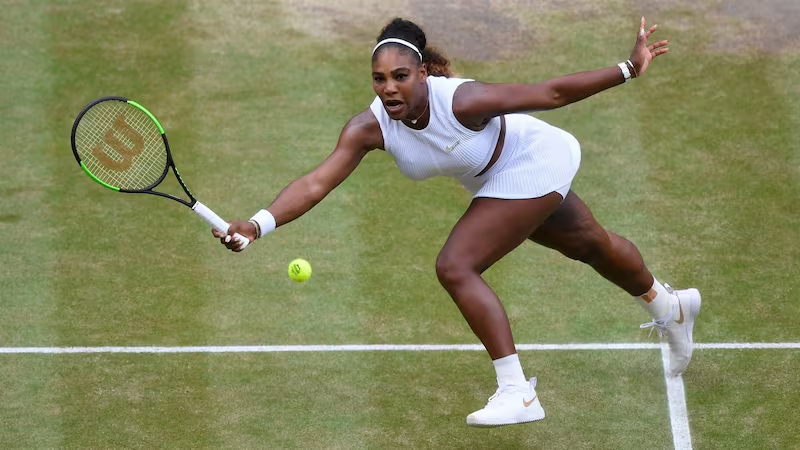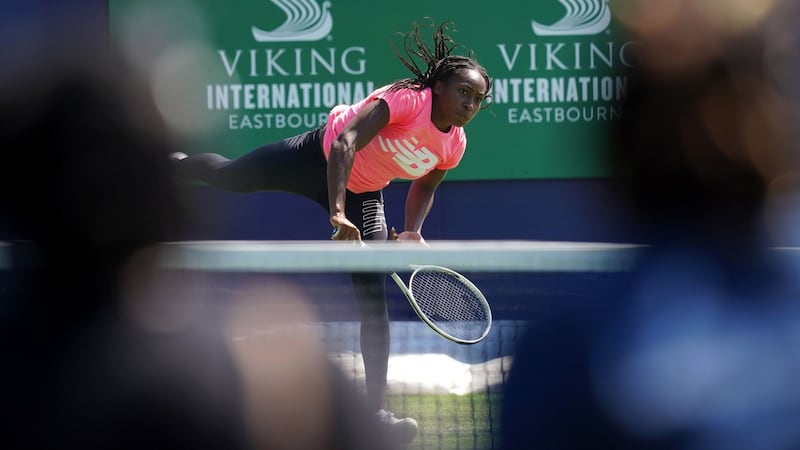There are a number of reasons the All England club should have tried harder to convince Naomi Osaka to rent an up-market suburban house around Southfields or Wimbledon for these two or three weeks.
There were more good reasons why they should have broken with protocol and assured Osaka that media commitments after each match did not have to be part of their participation agreement as they are in every Grand Slam event.
In fact there are eight good reasons that might have convinced them that Osaka was worth a little bit of rule bending: Barty, Halep, Sabalenka, Svitolina, Kenin, Andreescu, Swiatek, Pliscova.
All are top athletes and tennis players but also names that few people outside of the sport could pick out of a line-up and Halep has now also withdrawn. The missing players from that group of top 10 in the WTA rankings are Osaka ranked two and Serena Williams ranked eight.
The Japanese star withdrew from Wimbledon weeks after she pulled out of the French Open citing her struggle with depression and anxiety, although she will be prepared to play in the Olympics, which begin in the last week of July.
Earlier this month in a statement from the Grand Slam Tournaments, it was made clear that no curving of the rules would be afforded to one of the biggest draws in sport.

It was pointedly explained that the Grand Slam view of not doing media when all the other players are expected to participate might give Osaka an unfair advantage. Maybe so, but for a sport that thrives on star personalities, look at what they are left with.
People might also ask if they allow timeouts during matches for players with tight hamstrings, why can’t one of their biggest names take timeouts on media when she has a legitimate medical reason for doing so.
Fair playing field
“Together as a community we will continue to improve the player experience at our tournaments, including as it relates to media,” said the Grand Slam statement.
“Change should come through the lens of maintaining a fair playing field, regardless of ranking or status. Sport requires rules and regulations to ensure that no player has an unfair advantage over another.”
Osaka has been in the spotlight since last year’s US Open where she wore face coverings each day bearing the name of a black person killed by US police.
Coming into the French Open earlier this month hers was the name on everybody’s lips. But she subsequently withdrew after she was fined $15,000 and threatened with disqualification after refusing to honour mandatory media commitments.
But there is more than Osaka baked into this year’s Wimbledon cake. Fitness doubts remain over Australia’s world number one Ashleigh Barty, while third-ranked Halep, who denied Williams the record-equalling Slam at Wimbledon two years ago, has not recovered from her calf injury.
Williams remains one short of Margaret Court’s 24 major wins.
Barty will have to do it the hard way if she’s to clinch her second career major in exactly two weeks’ time. The Australian has opted not to play any of the lead-up events as she eases her way back from a hip injury that ended her French Open hopes. Halep left it longer only withdrawing on Friday realising she would not be competitive.
“It is with great sadness that I’m announcing my withdrawal from the championships as my calf injury has not fully recovered,” said Halep.
“I gave it everything I had in order to be ready to play Wimbledon and after having such special memories from two years ago, I was excited and honoured to step back on these beautiful courts as defending champion.
“Unfortunately, my body didn’t co-operate and I’ll have to save that feeling for next year.”
“I can honestly say that I’m really down and upset about having to take this decision,” she continued. “This period has been difficult, but to miss the last two majors has made it even more challenging mentally and physically.”
What it all means for the competition is the world number one is struggling, the world number three has succumbed to injury and the world number two has withdrawn.
Williams apart, it’s not hard to see a second week at Wimbledon with any recognisable star quality names other than hers, a triumph if that happens as Williams will be 40-years-old in September.
American razzmatazz
Of them all the tenacious and fearless American Coco Gauff, who turned 17-years-old in March and is ranked 23rd in the world is probably the player on which organisers are pinning their hopes as she can provide some of the American razzmatazz on which the tournament thrives. She is also the biggest television attraction after Williams and easily capable of surviving into week two.

It is two years since Gauff announced her talents to the world as a 15-year-old by reaching the Wimbledon fourth round. She returns as a legitimate challenger for the title having broken into the top 25 and reached her first Slam quarter-final at this year’s Roland Garros.
The one person who will not be souring at the way rules and injuries of Osaka, Barty and Halep have shaped the draw is the old stager herself, who is hoping to make her milestone birthday all the sweeter with Grand Slam number 24 and her eighth Wimbledon title.
Former American world number one and 18 times Grand Slam winner Chris Evert has even been talking up her compatriot’s chances. Speaking to Eurosport last month Evert compared Williams with the eight times men’s champion.
“Like Roger Federer I would give Serena a better chance at Wimbledon because the grass is perfect for her game,” said Evert.
“On the grass, if Serena is fit and that serve is working then that’s half of the match right there.”
It’s not hard to see Evert’s point of view. Of the top 10 players in the world Williams and Osaka, between them, have won 27 career Grand Slam titles, the American 23 and Osaka four. All of the other top 10 players combined hold six Grand Slam titles in total and just one of them a Wimbledon crown.
Romanian Halep won Wimbledon in 2019 and Roland Garros in 2018. Barty was 2019 champion in Paris, while 22-year-old American Sofia Kenin won in Australia last year. Bianca Andreescu was the US Open champion in 2019 and Poland’s Iga Swiatek won the French Open in 2020.
The world number four and big hitting Belarusian Aryna Sabalenka has never been past the last 16 in a Grand Slam. The fifth ranked Ukrainian player Elina Svitolina has been to two semi-finals at Wimbledon and the US Open, while 29 year old Karolina Pliskova has never been past the round of 16 at Wimbledon, her best a semi-final at the Australian Open in 2019 and a Roland Garros semi-final in 2017. Prior to that, the round of 16 in Paris was as far as she had got.
There is also Czech player Barbora Krejcikova, who is the form player after her surprise triumph in the French Open. At Wimbledon? Well she has never played.
Unfamiliar
It is as open as it ever has been and more the pity because despite their talent, many of the names of the leading lights will be unfamiliar. Tennis needs only to look back 20 years to see how much of the sparkle has fallen off the main characters.
In 2001 Lindsey Davenport, Jennifer Capriati, Venus Williams, Martina Hingis, Kim Clijsters, Serena Williams, Justine Henin, Jelena Dokic, Amelie Mauresmo and Monica Seles filled the top 10 places in the rankings. Amazingly Williams, six then, was just two places better than her current ranking.
The reality is that people don’t just watch Wimbledon for a nice back hand or the perfect serve. The reasons are more mercurial. It’s a carnival as much as a sports event. It’s Showtime on Church Road.
Wimbledon fans look for personalities they know. They look for rebellious streaks and hissy fits and bad dads. They look for prima donnas on the cover of Vogue and expect temper tantrums.
Maybe Sabalenka against Pliscova in a quarter-final will provide all that. Let’s give it two weeks.












